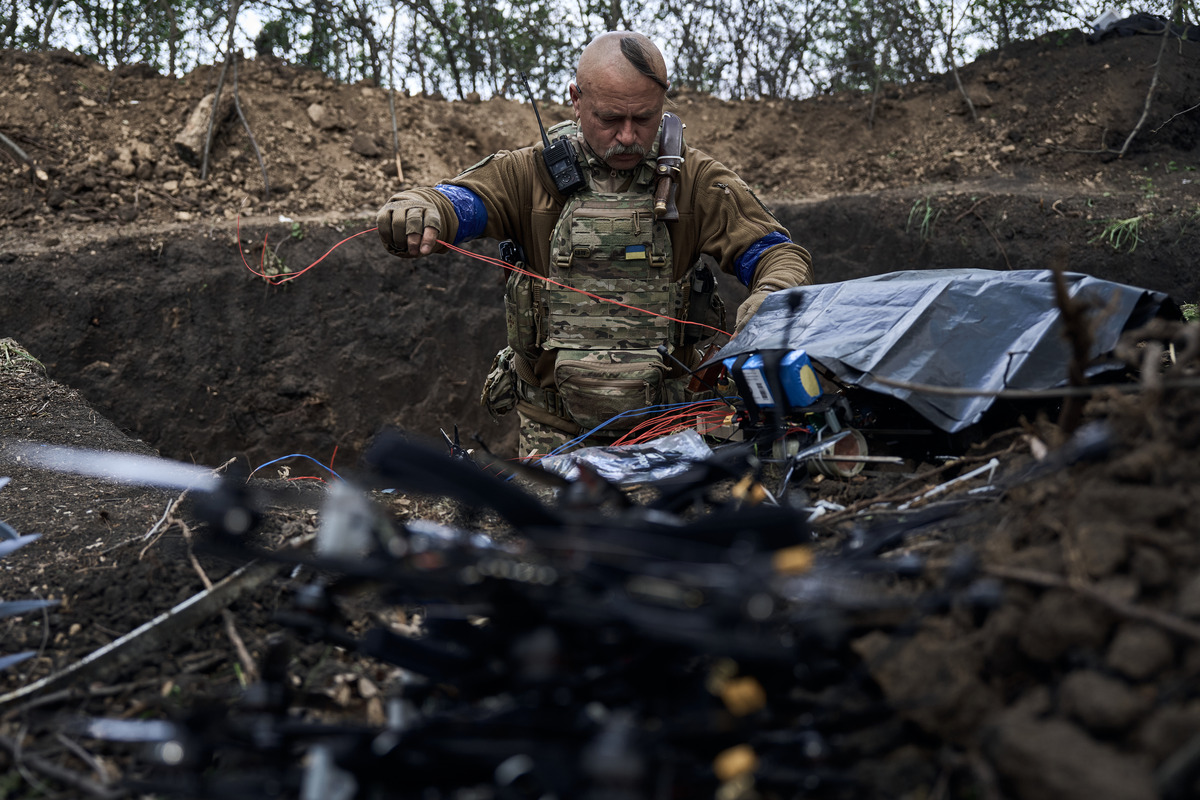Ukraine is making significant strides in developing interceptor drones aimed at neutralizing Russian unmanned aerial vehicles (UAVs) before they reach crucial targets. According to a report by the German newspaper Bild, Kyiv has laid out a three-phase plan to enhance its drone capabilities, including countering Russia’s deadly Shahed loitering munitions.
The conflict in Ukraine has been characterized by rapid advancements in drone technology, with both Kyiv and Moscow vying to outpace each other in the air. As part of its strategy, Ukraine has successfully initiated the first phase of its plan by downing Russian reconnaissance and strike quadcopters using its own small drones.

Kostiantyn Liberov/Libkos/Getty Images
There are numerous reports showcasing Ukrainian drones, particularly first-person-view (FPV) models, engaging and destroying Russian UAVs mid-flight. Footage has captured instances of Moscow’s drones colliding with Ukrainian UAVs, underscoring the intense aerial competition.
In addition to small drones, Ukraine is reportedly expanding its inventory of fixed-wing drones that can intercept Russian UAVs from distances of up to 60 kilometers (about 37 miles). These aircraft are currently undergoing testing and are expected to be operational later this year.
Ukrainian company Besomar recently announced the creation of a budget-friendly “kamikaze interceptor” drone that also includes reconnaissance capabilities. Images shared by a military outlet appear to confirm its development.
The third phase of Ukraine’s strategy focuses on creating high-speed, long-range “drone killers” targeting both Russian and Iranian-designed drones. Throughout the conflict, Russia has frequently deployed Shahed drones, referred to as Geran UAVs in its military operations.
As of Monday, it was reported that Russia launched eight Shahed drones at Ukraine overnight, with Ukrainian air defenses successfully intercepting six. The remaining two drones were lost in unconfirmed locations due to widespread electronic warfare across the country.
Kyiv aims to develop these Shahed-targeting drones with impressive ranges of up to 500 kilometers (over 300 miles) by next year. This initiative is driven by the high costs associated with current interceptor missiles, which are often deployed to counter the more affordable Shahed drones.
Traditional air-defense systems, such as the U.S.-provided Patriot missiles, can cost millions of dollars per intercept, making Ukraine’s push for economically viable drone solutions increasingly crucial in the ongoing conflict.
